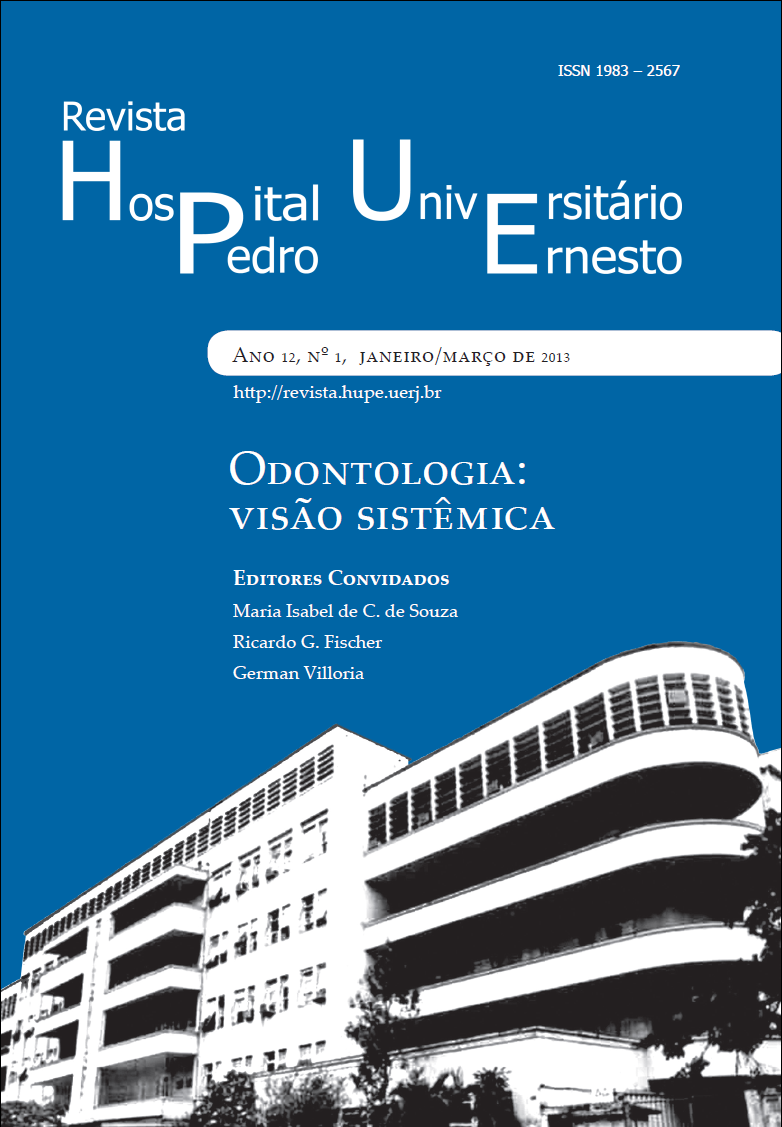A relação entre maloclusão e desordens temporomandibulares: uma breve digressão pelos últimos 80 anos
DOI:
https://doi.org/10.12957/rhupe.2013.8802Abstract
Nos últimos 80 anos, uma variedade deestudos focou na relação entre as maloclusõese as desordens temporomandibulares (DTMs). No início, as maloclusões eram consideradas como fator de risco principal e até único para as DTMs. Posteriormente, ficou claro que a etiologia dessas condições era multifatorial. O conceito de etiologia multifatorial se inicia do final da década de 1970 e 1980 e tornou-se amplamente aceito. De acordo com este conceito, três grupos principais de fatores etiológicos estão envolvidos: o anatômico (incluindo a maloclusão e a própria articulação), o neuromuscular e o psicológico. Quanto maior o número de fatores envolvidos, maior a chance de desencadeamento de dor e disfunção. O objetivo do presente trabalho é realizar uma revisão da etiologia das DTMs focando principalmente no papel das maloclusões. Existe a necessidade do estabelecimento de critérios específicos como intuito de auxiliar o profissional a decidir quando a terapia oclusal é fundamental para o controle dos sintomas de DTM. Considerando que as causas de vários subgrupos de DTMsnão estão totalmente elucidadas, procedimentos reversíveis devem usualmente representar a primeira opção de escolha no controle destas condições. A revisão sobre a etiologia das DTMs e a relação entre maloclusão e estas desordens temporomandibulares permite concluir que:(1) a importância do papel das alterações oclusais não deve ser exagerada levando-se em consideração também outras condições; (2) a maloclusão pode ser um fator a contribuir para o desencadeamento das DTMs e (3) o estabelecimento de uma oclusão estável e funcionalmente satisfatória parece ser importante ao término do tratamento reabilitador/ortodôntico.Downloads
Ausgabe
Rubrik
Artigos


